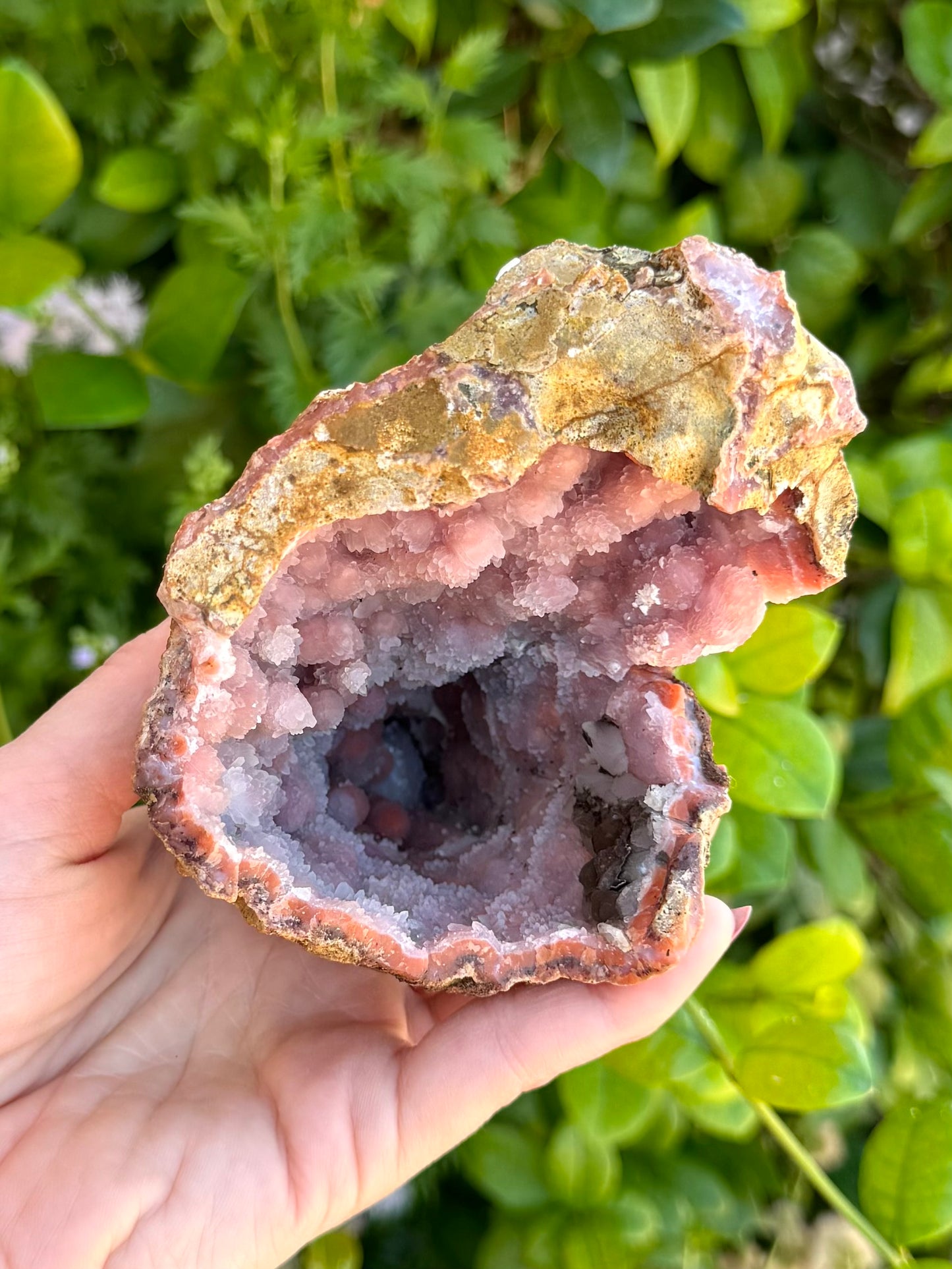Stalactitic chalcedony geode (repaired) "The Waffle Cone"
Stalactitic chalcedony geode (repaired) "The Waffle Cone"
Couldn't load pickup availability
Locale: Atlas Mountains, Morocco
Approx dimensions: 5.5 x 3.5 x 3"
Approx weight: 458g
**Repaired specimen
These unusual geodes from Morocco are like small caves lined with stalactites, botryoidal forms, and swirling agate patterns. While commonly called red chalcedony, I find the color is more orange to red-orange. Hematite causes this coloration, but later phases of growth (“second generation”) don’t contain hematite inclusions. This creates a colorless-to-white growth over the orange chalcedony, which can produce a soft orange-cream druzy coating, or bold Halloween patterns of orange and white stripey stalactites.
I would love to know more about how these formed. I have observed many are “ice cream cone” shaped—technically speaking, “conical.” This one fits perfectly in the hand like a cone so it earned the moniker! It has orange chalcedony coated with a relatively thick layer of frosty translucent quartz. The quartz has formed in small rice-shaped crystals growing parallel to one another across the surface. Since chalcedony and quartz are closely related you often see them grow together. They have the same chemical composition (silica) but different crystal structure (cryptocrystalline vs. crystalline).
The growth changes near the tip and the orange chalcedony shows through better. The rounded white crystal near it is radial-growth quartz. There is additionally a cluster of calcite crystals at the entrance of the geode. They have a brown overgrowth on them that almost appears bronze (unknown; I have not been able to find info on common associates of this material).
This specimen has been inexpertly repaired from several pieces. Not all pieces were reset evenly so cracks may be offset. White glue is visible on the inside of the geode near the tip.
UV reactivity Under 365 nm UV light, the white quartz layer fluoresces white and the calcite has a strong orange-red reaction with phosphorescence.
** Brittle warning! This material has the tendency to be crumbly, shedding pieces when handled. Limit handling and do not place stress on repair joints.
Repaired: This specimen has been repaired, meaning it broke but someone recompiled and glued it back together. These Moroccan geodes are frequently recompiled and glued together—but this is infrequently disclosed :( Read more about how to detect repairs.
I don't know how often breaks occur due to rough techniques in mining or cracking the geodes open, but I suspect many of the breaks are natural based on how few intact pieces I have ever seen. I have observed many of these geodes have a fairly thin, brittle crust which may make them susceptible to fracturing as part of normal geological processes. I have also seen examples where it appeared iron staining had leaked through the breaks, indicating the cracks occurred well before the specimen was mined.
























